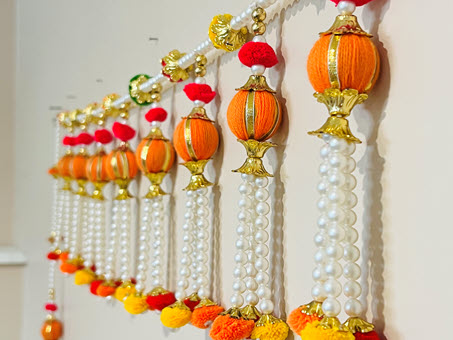In the heart of India’s rich tapestry of festivals lies a celebration that radiates with spiritual significance, cultural heritage, and boundless joy – Janmashtami. This cherished festival marks the divine birth of Lord Krishna, a beloved deity revered for his wisdom, compassion, and playful charm. As the echoes of devotional songs and joyous celebrations fill the air, Janmashtami becomes a time to not only honor Lord Krishna’s birth but also to immerse oneself in the teachings and legends that have captivated generations.
A Divine Birth: Janmashtami holds its roots in the ancient Indian city of Mathura, the birthplace of Lord Krishna. According to Hindu scriptures, Lord Krishna was born on the eighth day of the lunar month of Bhadrapada, which usually falls in August or September. His birth was not just a historical event but a divine incarnation, with Lord Krishna emerging as the eighth avatar of Lord Vishnu, the preserver of the universe. The tale of his birth, complete with enchanting legends and divine miracles, captivates the hearts of devotees across the country.
Symbolism and Significance: Janmashtami goes beyond the commemoration of a historical event; it encapsulates profound spiritual teachings. Lord Krishna’s life and teachings emphasize the values of righteousness (dharma), duty, love, and devotion. His timeless lessons, imparted through the sacred text of the Bhagavad Gita, continue to guide seekers on their journey toward self-realization and spiritual awakening. The festival is a vibrant reminder of the eternal struggle between good and evil. Lord Krishna’s life is a testament to how righteousness triumphs over darkness, compassion prevails over cruelty, and love conquers hatred. The symbolism of Lord Krishna’s birth resonates deeply, encouraging devotees to introspect, seek truth, and lead a life of virtue.
Preparations and Festivities: Days leading up to Janmashtami are a flurry of activity as devotees prepare to celebrate with utmost devotion. Homes and temples are adorned with intricate rangoli designs, vibrant decorations, and ornate cradles (jhankis) to welcome the divine infant’s arrival. Fasting and prayer are integral to the celebration, as devotees abstain from food until midnight – the auspicious moment of Lord Krishna’s birth. The midnight celebration holds a special place in Janmashtami’s festivities. Devotees gather to observe the exact moment of Lord Krishna’s birth, known as “Nishita Kaal,” with prayers, hymns, and rhythmic devotional dances. Temples resound with the sounds of bhajans, kirtans, and devotional songs, creating an atmosphere of divine fervor.
Cultural Extravaganza: Janmashtami is not only a spiritual event but also a cultural extravaganza. One of the most cherished traditions is the enactment of Krishna’s childhood episodes through vibrant dance dramas known as “Rasa Leela.” These performances vividly depict Lord Krishna’s playful interactions with the gopis (milkmaids) and his divine charm that captivated hearts. Traditional delicacies play an integral role in Janmashtami celebrations. Sweets like “Makhan Mishri” (butter and sugar) and “Poha” (flattened rice) are prepared and offered to Lord Krishna, reflecting his love for butter as a child. Devotees eagerly share these treats as “prasad,” a blessed offering.
Unity in Diversity: Janmashtami transcends geographical boundaries, uniting devotees from different backgrounds, languages, and cultures. While celebrated with fervor across India, the festival also finds resonance in other parts of the world with Indian communities. The shared devotion and enthusiasm create a sense of unity and oneness, reinforcing the universal teachings of Lord Krishna.
Janmashtami is not merely a celebration; it’s a profound journey into the heart of spirituality, a joyous remembrance of divine grace, and a cultural extravaganza that unites communities. As the notes of devotional songs fill the air and the divine aura envelops devotees, Janmashtami becomes an opportunity to embrace the wisdom, love, and eternal teachings of Lord Krishna, transforming lives and hearts with its sacred significance.




